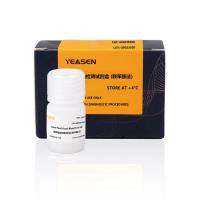A Molecular Technique Useful in the Detection of Occult Metastases in Patients with Melanoma: RT-PCR Analysis of Sentinel Lymph Nodes and Peripheral B
互联网
377
When cutaneous melanoma is confined to the skin, simple excision with adequate margins will usually cure the patient (1 ,2 ). Local recurrences do occur but reexcision still results in a very high cure rate. When cutaneous melanoma spreads beyond the primary site, the metastases are predominantly by way of the lymphatics. If in-transit disease or regional lymph node involvement is present, the 5-yr survival rate drops to approx 60% (1 –3 ). Accurate staging of the locoregional lymphatic basin is thus extremely important. Pre- operative lymphoscintigraphy followed by selective lymphadenectomy has revolutionized the staging of cutaneous melanoma by delivering to the pathologist only those nodes that are most likely to contain metastatic cells (4 ). A close examination of these sentinel lymph nodes (SLNs) by serial sectioning and immunohistochemical staining can detect very minute quantities of melanoma. This type of detailed examination is impossible in standard lymphadenectomy specimens that can contain 20–40 lymph nodes. The standard technique used to examine large numbers of lymph nodes is to examine only 1–5% of each node using hematoxylin and eosin staining. This can obviously miss micrometastatic disease and understage the patient.









